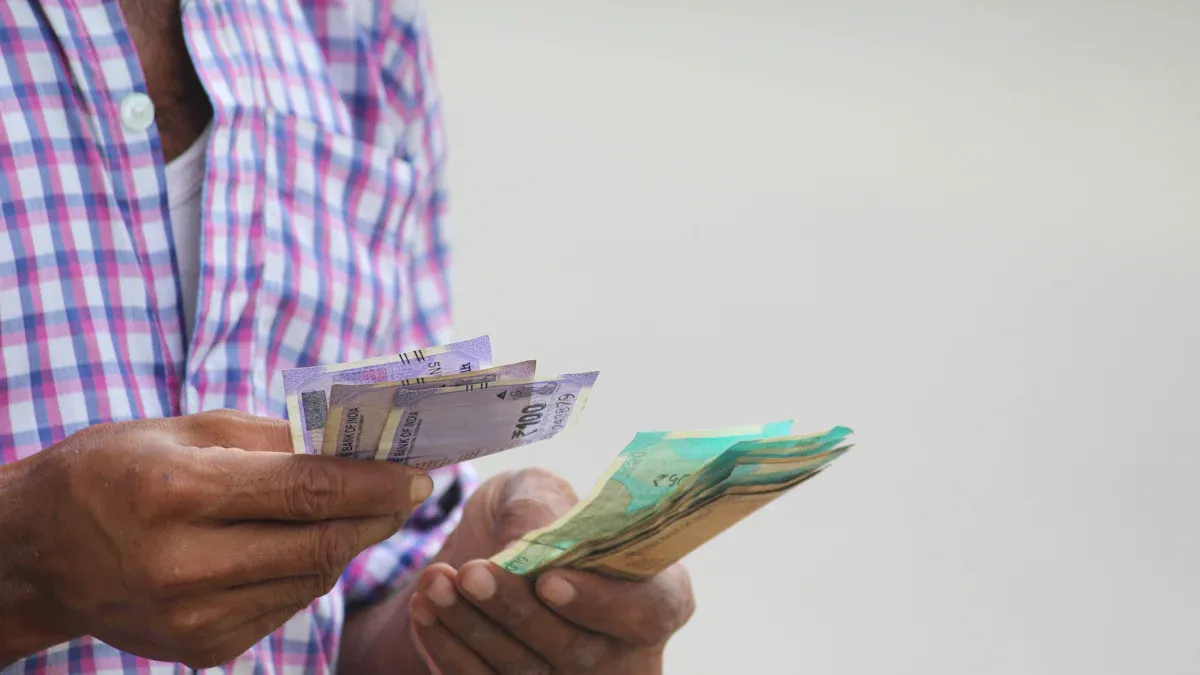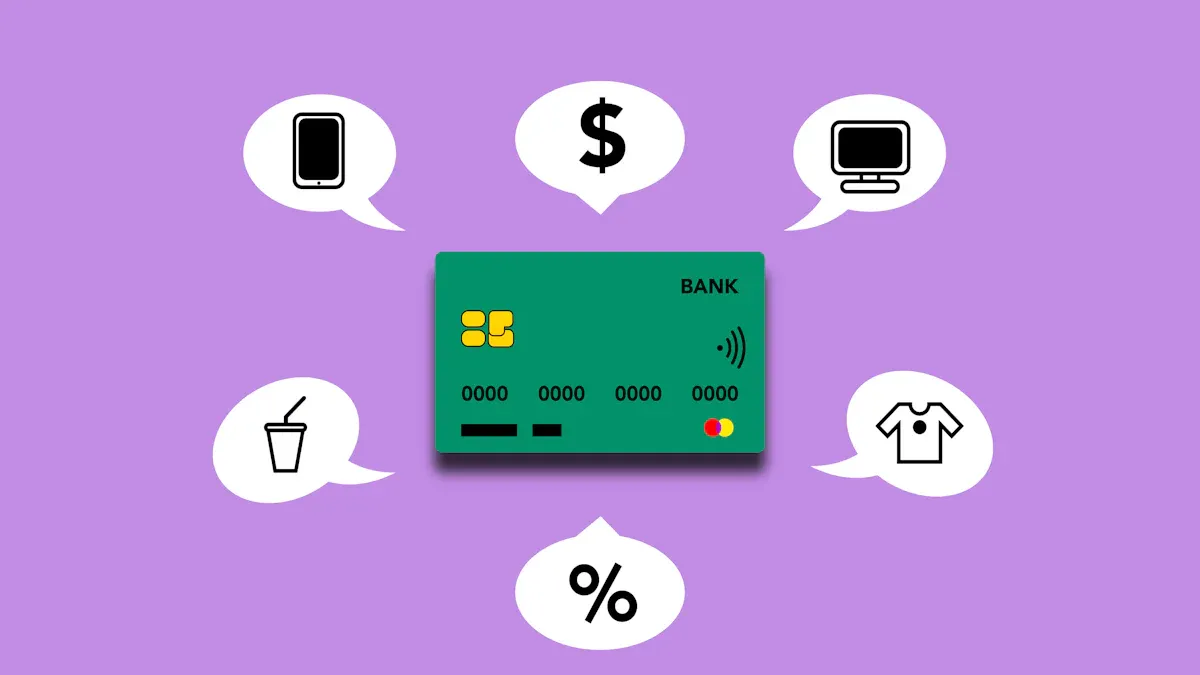- EasyCard
- Trade
- Help
- Announcement
- Academy
- SWIFT Code
- Iban Number
- Referral
- Customer Service
- Blog
- Creator
What Are the Things You Must Know About Cross-border Remittance by Telegraphic Transfer to South Korea?

Image Source: pexels
Do you need to pay tuition for a child studying in South Korea or send living expenses to family? When conducting cross-border remittances, you may worry about safety, fees, and delivery speed.
This article will help you clarify your thoughts. You can learn how to ensure your funds reach South Korea safely, economically, and efficiently, solving your remittance challenges.
Key Points
- Choosing the remittance method is important. For large amounts, banks are safer; for small, urgent needs, online platforms are cheaper and faster.
- Preparing accurate recipient information is key. The recipient’s name, bank account, and SWIFT code must be completely correct, or the transfer will be delayed or fail.
- Understand the total remittance cost. Besides handling fees, pay attention to hidden costs in the exchange rate and compare total expenses across platforms.
- Comply with remittance regulations in China and South Korea. China has an annual $50,000 personal foreign exchange purchase limit; exceeding it requires proof documents.
- Tracking remittance status gives peace of mind. Bank wires take longer, while online platforms are usually faster with real-time tracking.
Choosing the Right Cross-Border Remittance Channel

Image Source: pexels
Choosing the correct channel is the first step to successful remittance. You can use traditional banks or modern online platforms. Each has pros and cons, and you need to decide based on your situation.
Traditional Bank Wire Transfers
Bank wire transfers are the most classic and reliable method. Their biggest advantage is security. Banks connect global financial institutions via the SWIFT network and follow strict anti-money laundering (AML) and identity verification protocols, providing solid protection for large funds.
However, banks’ convenience and cost are shortcomings. A wire transfer from mainland China or Hong Kong typically incurs fees between $25 and $50, with possible additional intermediary bank fees. The process may take 2 to 7 business days, unsuitable for urgent situations.
Online Remittance Platforms
Online remittance platforms are a more modern choice, such as Wise or Remitly. They are user-friendly, often completing setup in minutes on a phone or computer. These platforms typically support transfers to major Korean banks, including Shinhan Bank, KEB Hana Bank, and Kookmin Bank.
Many platforms offer better exchange rates, some even using the mid-market rate with no hidden markups, and fees are more transparent. Some providers offer $0 handling fees for first-time users. This makes small cross-border remittances very cost-effective.
Channel Comparison
How should you choose? It depends on your transfer amount, urgency, and preferences.
| Feature | Traditional Bank Wire | Online Remittance Platform |
|---|---|---|
| Delivery Speed | Slower (2-7 business days) | Faster (minutes to 1-2 business days) |
| Total Cost | Higher | Lower |
| Exchange Rate | Includes bank profit | Usually better, more transparent |
| Security | Very high, suitable for large amounts | Secure, suitable for small to medium amounts |
Selection Advice
- Large Remittances (e.g., tuition, home purchase): If the amount is significant and security is paramount, banks are the safer choice.
- Small, Urgent Remittances (e.g., living expenses, family support): If you want fast delivery and lower costs, online platforms are more efficient and economical.
Preparing Accurate Remittance Information
Information errors are the primary cause of delayed or failed remittances. Before submitting your application, carefully prepare and verify the following details to ensure everything is perfect.
Recipient Information Checklist
You need to obtain a complete bank information list from the recipient. A single minor error can prevent funds from being credited. Ensure you have all the following:
- Recipient’s Full Name: Must be the legal full name registered with the bank account, matching passport or ID exactly.
- Recipient’s Address: Complete residential address, including city and postal code.
- Bank Name: The bank’s official full name, e.g., “Shinhan Bank”.
- Bank Account Number: The accurate recipient account number.
- SWIFT/BIC Code: The bank’s international identification code for the global wire network.
- Bank Address and Branch Name: Some remittances require specific branch details to help locate and process funds faster.
Sender Proof Documents
Under anti-money laundering regulations, banks or platforms need to verify your identity. Prepare the following documents:
- Valid Identity Proof: Per China’s foreign exchange regulations, remittance transactions require valid identity proof. Typically, present a government-issued ID, such as your resident ID card or passport.
- Proof of Address: Provide a recent proof of address to confirm your current residence. This document should be issued within the last three months by a reputable entity like a bank, utility company, or government agency. Common valid documents include:
- Utility or internet bills
- Bank or credit card statements
Tip
Many institutions now accept electronic bills as proof of address. You can download PDF files directly from bank or provider websites, making preparation more convenient.
Key Information Verification Points
After preparing all information, the final verification step is crucial. Pay special attention to:
- Verify Recipient Name: The most error-prone area. The recipient’s name spelling, including any middle names, must match their passport exactly. A single letter difference can lead to rejection by the receiving bank.
- Double-Check Account Number and SWIFT Code: If the account number is wrong but valid, funds may be deposited incorrectly, with a long, uncertain recovery process. If invalid, the transfer is returned, but it may take 3 to 14 business days, and you may lose paid fees.
Analyzing Remittance Costs and Exchange Rates

Image Source: pexels
When remitting, you pay more than just “handling fees.” Total costs consist of multiple parts; understanding them saves you money.
Handling Fee Structure
Remittance handling fees are typically divided into several parts. What you see is just the tip of the iceberg.
- Sender Fee: The service fee charged by your chosen bank or platform.
- Intermediary Bank Fees: If your transfer passes through one or more intermediary banks, they charge a processing fee, usually $15 to $50. This fee is sometimes unpredictable.
- Recipient Fee: Some Korean banks charge a fee for receiving international remittances.
When remitting, you encounter different fee payment options. Understanding them helps decide who bears these fees.
- OUR: You pay all fees, including intermediaries. The recipient gets the full amount.
- SHA: You pay only your bank’s fee. Intermediary and recipient bank fees are deducted from the remittance amount. This is the most common option.
- BEN: You pay no fees. All fees are borne by the recipient, who receives less than you sent.
Hidden Costs in Exchange Rates
The exchange rate is the biggest factor affecting your total cost and the most overlooked.
The rate you search online is typically the “mid-market rate,” the true rate used by banks for interbank trades. However, most banks and some remittance services add a “markup” or “spread” to the rate they offer you. This difference is their profit and your hidden cost.
For example, a provider may advertise “$0 fees,” but its rate could be 2-3% worse than the mid-market rate. This means for every $1,000 sent, you may pay an extra $20 to $30 due to the poor rate.
How to Spot Hidden Costs?
Before remitting, use rate tracking tools on sites like Wise to check the current real-time mid-market rate. Then compare this to the rate offered by the bank or platform. The smaller the difference, the more cost-effective your remittance.
Method to Calculate Total Cost
To accurately know how much a remittance costs, add up all fees. Use this simple formula to estimate:
Total Cost = Sender Handling Fee + Intermediary and Recipient Fees + Exchange Rate Hidden Cost
The “exchange rate hidden cost” can be calculated as:
(Mid-Market Rate - Your Received Rate) × Remittance Amount
This method clearly compares different channels. An option with seemingly low fees may have higher total costs due to poor rates. Conversely, a platform with transparent fees and favorable rates, even with minor fees, may ultimately cost you less.
Understanding Related Regulations and Limits
For a successful cross-border remittance, you must not only choose the right channel but also comply with financial regulations in mainland China and South Korea. Knowing these rules and limits helps avoid unnecessary delays or legal issues.
China’s Personal Foreign Exchange Quota
According to China’s State Administration of Foreign Exchange (SAFE), each mainland Chinese resident has an annual personal foreign exchange purchase quota equivalent to $50,000. This quota covers most daily remittance needs, such as sending living expenses to family.
Examples of Documents Needed for Excess Remittance:
- Study Abroad Expenses: Provide the school’s admission letter and tuition bill.
- Medical Expenses: Provide overseas hospital invoices.
After reviewing your genuine transaction proof, the bank will process remittances exceeding the annual limit.
South Korea’s Receiving Regulations
Besides sender regulations, understand South Korea’s requirements for recipients. The Korean government requires residents to declare overseas financial accounts held.
If a recipient in South Korea holds or receives overseas funds exceeding a certain threshold (e.g., 500 million KRW), they must report to tax authorities. While this is typically the recipient’s responsibility, knowing this helps you communicate better with the recipient to ensure compliant fund receipt.
Single Transfer Limit Reminder
Note that the annual $50,000 total quota doesn’t mean you can send that much in one go. Your chosen remittance channel typically has its own single or daily transaction limits.
- Bank Channels: Many banks’ online banking services set single and daily remittance caps, independent of the annual total.
- Online Platforms: Online platforms commonly limit personal remittances. For example, some may cap single transfers at $5,000.
Important Note
Before remitting, confirm the specific single transaction limit with your chosen bank or platform. Additionally, some platforms require a Korean local phone number for extra verification when sending over approximately $700 (950,000 KRW) to South Korea.
Estimating Delivery Time and Tracking
After submitting a remittance, your main concern is when funds will safely arrive. Delivery speed isn’t fixed, but you can track progress effectively for peace of mind.
Factors Affecting Delivery Speed
A remittance from your hands to the Korean recipient’s account goes through multiple stages. The following factors are key to its speed:
- Remittance Channel: Speed varies greatly between bank wires and online platforms.
- Intermediary Bank Processing: If your bank lacks a direct relationship with the Korean recipient bank, the transfer passes through one or more intermediary banks. Each additional link adds processing time.
- Holidays and Weekends: Banks process only on business days. Consider public holidays in mainland China, Hong Kong (if applicable), and South Korea. If any bank in the chain encounters a holiday, funds pause until the next business day.
- Submission Time: Most banks and platforms have daily transaction cutoffs. For example, a platform’s cutoff might be 4:00 PM Eastern Time. Submissions after this are deferred to the next business day.
Planning ahead is crucial. Before remitting, check South Korea’s bank holiday calendar, such as Chuseok or Seollal, to avoid initiating during long holidays.
Speed Differences Across Channels
Different channels have vastly different delivery times; choose based on urgency.
- Traditional Bank Wires: Due to the SWIFT network and possible intermediaries, bank wires typically take 2 to 7 business days.
- Online Remittance Platforms: These are much faster. Depending on the service, funds can arrive in minutes to 1-2 business days at the recipient’s bank account. Some platforms even offer instant cash pickup services.
How to Track Remittance Status
While waiting, you can proactively track each step.
For bank wires, after completion, the bank provides a transaction reference number. If delayed, contact bank support with this number to check status. For international wires, banks use the SWIFT network. Request a unique end-to-end transaction reference (UETR) code from the bank to track funds’ location globally more precisely.
Online platforms offer a friendlier tracking experience. You can see a clear progress bar or timeline on the app or website, displaying real-time status, such as:
- Remittance Created
- Funds Processing
- Funds Sent
- Remittance Delivered
Many platforms send instant notifications via email or push alerts, keeping you updated.
You now understand the five key steps for cross-border remittances to South Korea: choosing channels, preparing information, calculating costs, complying with regulations, and tracking progress.
Remember, there’s no absolute “best” method, only the one most suitable for you.
Before remitting, take time to compare based on amount and urgency. Making an informed choice ensures your funds arrive safely, economically, and efficiently.
FAQ
What if the remittance fails?
If a remittance fails, funds are usually returned to your account automatically. You may bear incurred handling fees. Contact bank or platform support with the transaction reference number to identify the failure reason, correct information, and resend.
Can I submit a remittance on weekends?
You can submit applications anytime. But banks and most platforms process only on business days. Weekend submissions are typically deferred to the next business day, affecting final delivery time.
Is there a difference remitting from a Hong Kong bank to South Korea?
The process is basically similar. Prepare recipient information and your ID proof. Remittances from Hong Kong are not subject to mainland China’s $50,000 annual limit. But your chosen Hong Kong bank or platform has its own single transaction limit rules.
What does the recipient need to do to receive the remittance?
Typically, if information is accurate, the recipient needs no action; funds are deposited automatically. For some large remittances, the receiving bank may contact them to verify fund sources, requiring cooperation with the bank for verification.
*This article is provided for general information purposes and does not constitute legal, tax or other professional advice from BiyaPay or its subsidiaries and its affiliates, and it is not intended as a substitute for obtaining advice from a financial advisor or any other professional.
We make no representations, warranties or warranties, express or implied, as to the accuracy, completeness or timeliness of the contents of this publication.




Contact Us
Company and Team
BiyaPay Products
Customer Services
is a broker-dealer registered with the U.S. Securities and Exchange Commission (SEC) (No.: 802-127417), member of the Financial Industry Regulatory Authority (FINRA) (CRD: 325027), member of the Securities Investor Protection Corporation (SIPC), and regulated by FINRA and SEC.
registered with the US Financial Crimes Enforcement Network (FinCEN), as a Money Services Business (MSB), registration number: 31000218637349, and regulated by FinCEN.
registered as Financial Service Provider (FSP number: FSP1007221) in New Zealand, and is a member of the Financial Dispute Resolution Scheme, a New Zealand independent dispute resolution service provider.




















